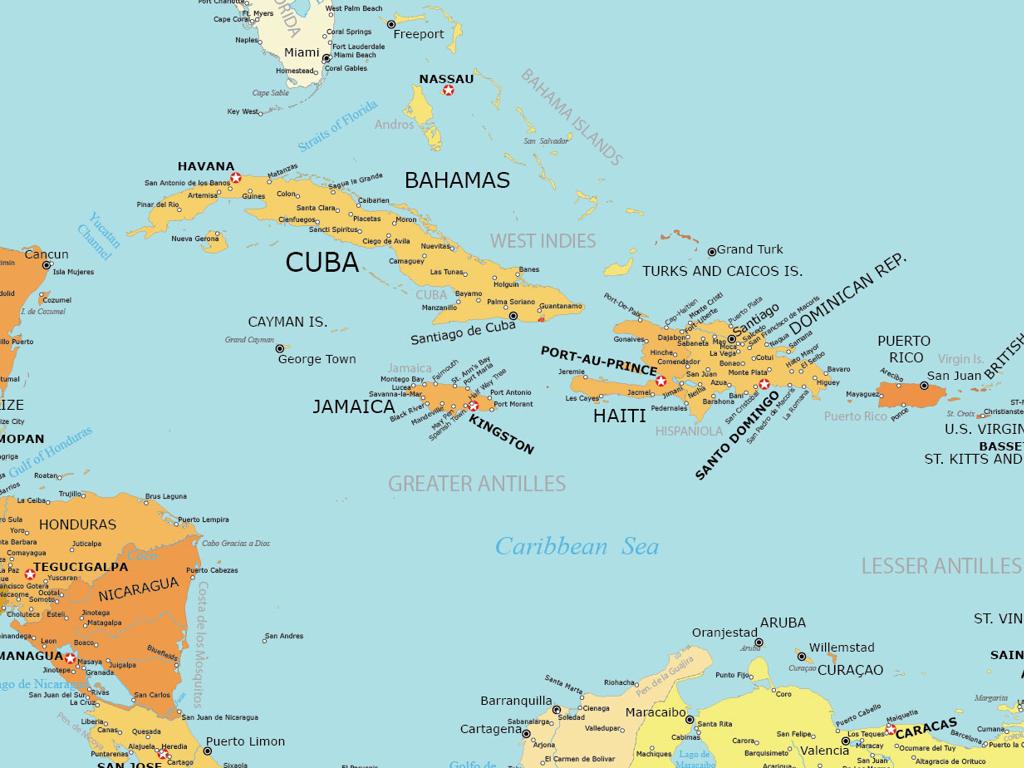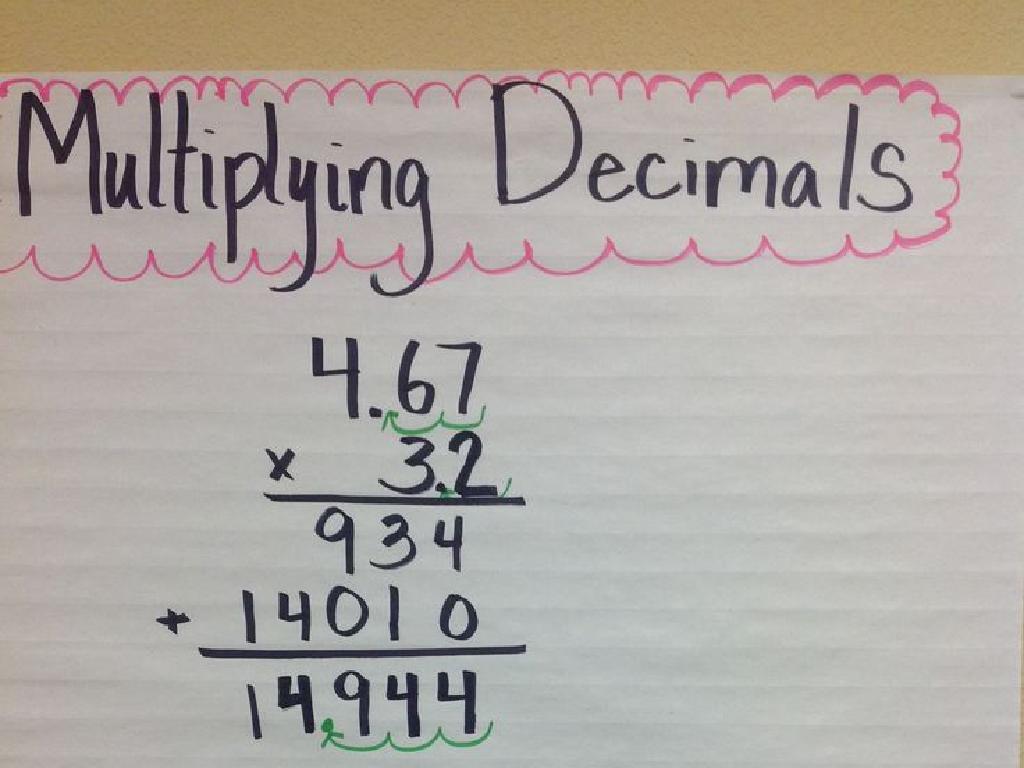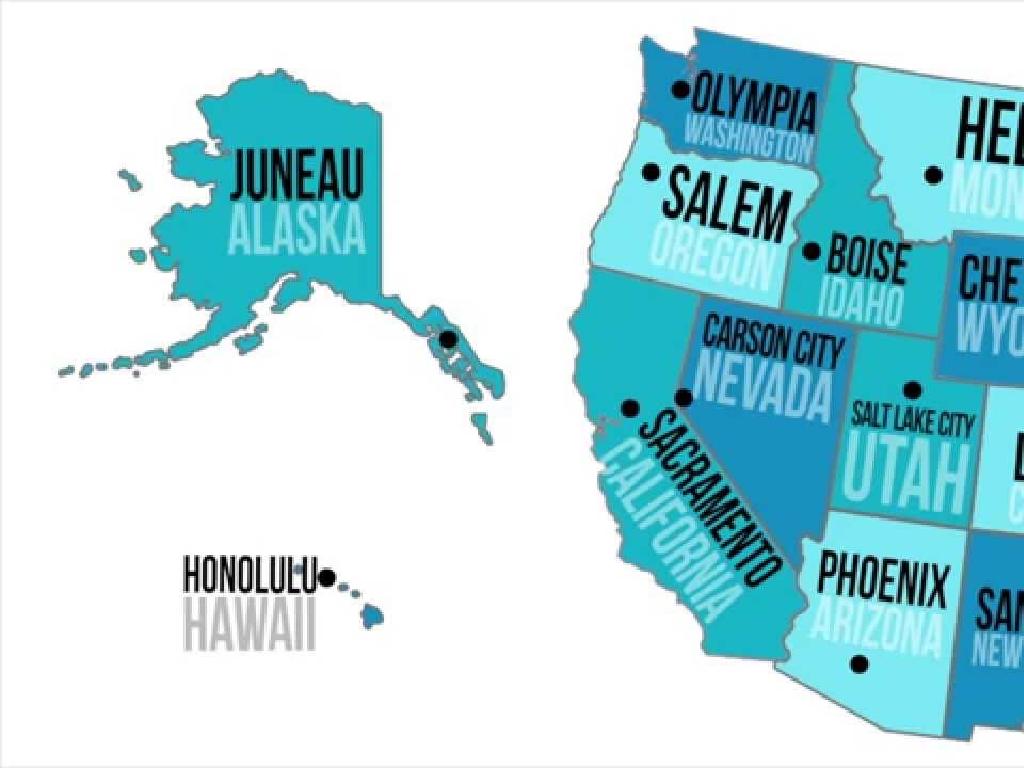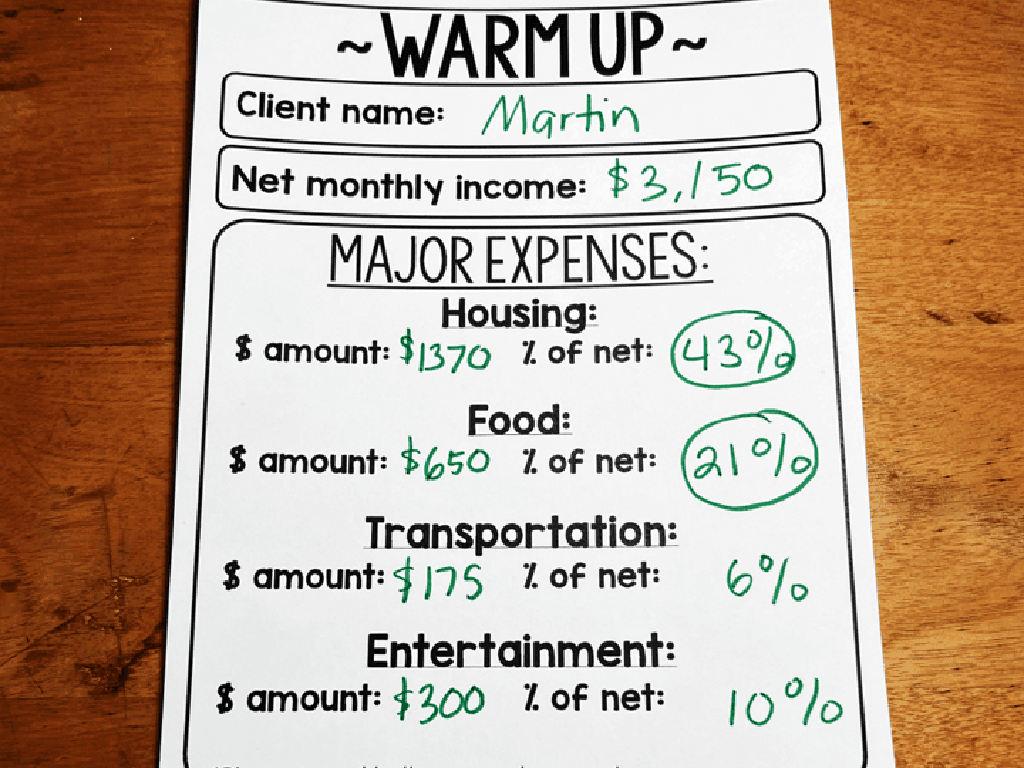Use A Map Key
Subject: Social studies
Grade: First grade
Topic: Maps
Please LOG IN to download the presentation. Access is available to registered users only.
View More Content
Welcome to the World of Maps!
– What is a map?
– Maps show us locations
– They guide us to different places
– Learn about map keys
– Map keys explain symbols
– Map keys help us understand maps
– Symbols represent things like schools, parks
|
Begin the class with an engaging question about what a map is to encourage participation. Explain that maps are tools that help us find where things are and how to get to different places. Introduce the concept of a map key, which is an essential part of understanding how to read a map. Map keys contain symbols that represent real-world objects or landmarks, such as schools, parks, and rivers. Use simple examples and perhaps a colorful, child-friendly map to illustrate your points. Encourage the students to think of symbols that they might find on a map and what they could represent. This will set the foundation for further activities where they will use map keys to interpret maps on their own.
Understanding the Map Key
– Map key is a special code
– It helps us read the map correctly
– Symbols on maps have meanings
– Like a secret language for navigation
– Common symbols we see
– Trees, mountains, and lakes
– What do these symbols represent?
– A tree could mean a park, a triangle might be a mountain
|
Introduce the concept of a map key to the students by comparing it to a special code that helps us understand the map’s symbols. Explain that just like we use words to communicate, maps use symbols to show locations and landmarks. Show examples of common symbols such as trees for forests, wavy lines for rivers, and triangles for mountains. Ask the students to think of symbols they have seen on maps and what they might represent. This will help them grasp the concept of a map key being a crucial tool for interpreting maps. Encourage them to bring in maps they have at home to share and discuss the symbols they find.
Understanding Map Symbols
– A tree symbolizes a park
– Wavy lines represent rivers
– Triangles on maps
– Mountains or hills are often shown as triangles
– Guessing game: What could it mean?
– Let’s guess what other symbols could mean!
|
This slide introduces students to the concept of symbols on maps and how they represent different physical features or landmarks. A tree usually marks a park on a map, and wavy lines often indicate rivers. Ask the students what they think a triangle might represent, guiding them to understand that it typically stands for mountains or hills. Encourage them to use their imagination to guess the meaning of other common symbols they might find on a map. This interactive approach helps to engage the students and makes the learning process enjoyable.
Creating Our Map Keys
– We can create our own map keys
– Think of symbols for favorite places
– Like a tree for a park or a book for a library
– Draw symbols on our map key
– Use colors and shapes to make symbols
– Share our map keys with the class
|
This slide is designed to introduce first graders to the concept of a map key, an essential part of map reading. Encourage the students to think creatively about symbols that represent their favorite places, such as a playground, school, or home. Guide them through the process of drawing these symbols on their map keys, emphasizing the use of simple shapes and colors. This activity will help them understand how symbols are used to represent real-world objects on a map. After completing their map keys, have the students share their creations with the class to foster a discussion about the different symbols they chose and why. This will also enhance their speaking and listening skills.
Our Classroom Map Adventure
– Creating our classroom map
– Positioning the classroom door
– Think where the door is and where it should be on the map
– Adding symbols with our map key
– Use symbols to show where things are
– Desks, bookshelf, and teacher’s desk
– Each symbol represents an item in our class
|
This slide is designed to introduce first graders to the concept of map-making and understanding a map key. Start by discussing what a map is and how it can represent our classroom. Engage the students by asking them where the door is located in the classroom and where they think it should be placed on the map. Introduce the map key and explain that it helps us understand what each symbol on the map stands for. Use simple symbols to represent desks, the bookshelf, and the teacher’s desk. Encourage the students to help decide where to place these symbols on the map. This activity will help students learn spatial awareness and the basics of interpreting maps. For the activity, provide a large piece of paper for the map, stickers or stamps for symbols, and markers to draw. Possible activities include students drawing their own desk on the map, finding the bookshelf on the map, or using the map to direct a classmate to the teacher’s desk.
Practice Time: Using the Map Key
– Find the playground on the map
– Identify the cafeteria symbol
– Use the key to locate places
– A map key helps us understand symbols
– Share what you found with the class
|
This slide is an interactive activity designed for first graders to practice using a map key. Provide students with a simple map that includes a clear key with symbols for various locations such as a playground, cafeteria, library, etc. Encourage them to use the key to identify these places on the map. This activity will help them understand how to interpret symbols and legends on maps, which is a fundamental skill in geography. As they find each location, they can mark it or write it down. After the activity, have a discussion where students share what they found and how they figured it out. This reinforces their learning and allows them to demonstrate their map-reading skills.
Class Activity: Treasure Hunt Adventure
– We’re going on a treasure hunt
– Use the map and key for clues
– The map key will guide you to find hidden treasures around the school
– Work together as a team
– Help each other and share ideas
– Remember what symbols represent
– Symbols like trees, water, and buildings help us navigate
|
This interactive activity is designed to help first graders understand and use a map key effectively. Provide each group with a simple map of the school with symbols representing different landmarks. The key will decode these symbols. Encourage teamwork as they follow the map to find clues that lead to a ‘treasure’. This hands-on experience reinforces the concept of symbols and keys on a map. Prepare 4-5 different sets of clues and treasure locations to ensure each group has a unique experience. Guide them to discuss what each symbol means and how it helped them find the next clue. After the activity, gather the class and discuss what they learned about using a map key.
Treasure Hunt Success!
– Congratulations on finding the treasure!
– Map keys help us find places
– Just like you used the key to find treasure, you can find other places too.
– A map key is a map’s guide
– It explains symbols and colors on the map.
– Keep practicing using map keys
– Try using a map key on different maps!
|
Well done to the class for successfully using the map key to locate the treasure! This exercise helped students understand how a map key functions as a legend, explaining the symbols and colors that represent different items or areas on a map. Reinforce the concept that a map key is essential for interpreting any map and encourage them to practice this skill with different types of maps. This will help them feel more confident in navigating and understanding new places. As they become more familiar with map keys, they’ll find it easier to explore and learn about the world around them.






